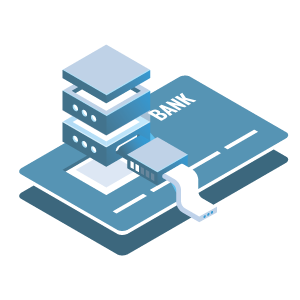From a merchant’s perspective, B2B payment processing can be considerably different than B2C payment processing. At first glance, the process is operationally similar; a customer gives their credit card or bank details to a vendor, who runs the charge and delivers the goods. However, below the surface, there are several differences that are important for merchants to understand.
A strategic approach to B2B payment processing that takes these differences into account can reduce fees by thousands of dollars per year, helping companies keep more of their hard-earned revenue. Meanwhile, real-time payment integrations can help B2B organizations speed up their accounting processes and improve their approach to data management, helping them give their business even more of a competitive advantage.
The B2B Payments Landscape
Historically, B2B payments have revolved around paper checks, wire transfers, and ACH. However, credit cards (including corporate purchasing cards, or p-cards, and fleet/fuel cards) have become more common over the last decade. In one recent study, 63.5 percent of CFOs say that their companies are using credit card payments more frequently than ever before. The rising demand for the speed and convenience of credit card transactions (not to mention the notable improvements in cash flow) has led many B2B merchants to invest in technologies that allow them to accept AMEX, VISA, MasterCard, and Discover, as well as newer digital payment methods.
Unfortunately, B2B transactions are just different enough from B2C transactions that B2C-oriented payment technologies, such as PayPal and Stripe, don’t necessarily provide enough flexibility to support optimal processing. For instance, B2B transactions may involve a lengthier production time for a large quantity order than a more straightforward B2C sale; the vendor needs s run an authorization at the time of purchase but not fully charge the card until they are ready to ship the goods several weeks down the line. Consumer-oriented payment gateways may not be flexible enough to accommodate these unique situations.
Current Trends in B2B Payment Processing
Beyond just standard credit card payments, digital payments – once almost exclusively used in B2C transactions – are becoming more popular in the B2B sector. Apple Pay, for instance, is gaining popularity in the B2B space.
Email- and text-based payment links are also helping B2B organizations speed up their payments process. Instead of going on a customer visit or attending a trade show and making the customer wait through a lengthy transaction, outside sales reps can simply email their customers a digital invoice with a convenient payment link. The customer can pay on their own time – even selecting a previously used card on file to speed the transaction up even further – and the data is passed directly back to the supplier’s order entry system.
Payment integrations are also becoming more commonplace. As businesses look to use their legacy applications more efficiently, payment integrations allow them to tie their transaction records back to their other business systems. Their AP and Finance teams don’t have to chase down data from segmented platforms; reconciliation and settlement processes become faster as well.
Security and compliance have become more crucial as well. Merchants can’t just promise their customers that they’ll protect their payment data; they have to maintain PCI compliance as well. To reduce some of this burden, many vendors are shifting the burden to their own payment processing vendors. Instead of taking their own IT teams with complicated security audits, they are implementing specially designed technologies that keep sensitive data off their own business systems, reducing the amount of reporting they’re required to complete.
B2B Payment Processing Fees
When it comes to B2B payment processing, various factors contribute to the fees involved. One important consideration is the level of processing required for a transaction. Level 3 processing is a specific type of payment processing that applies to purchases made with a corporate purchasing card (CPC) or government card. Here, the merchant provides detailed transaction data (such as line-item details, product codes, quantities, and tax information) in addition to the standard purchase amount and cardholder details. This can be a cost-effective option for vendors that primarily sell to other businesses or government entities.
Level 3 processing allows businesses to qualify for lower interchange rates, which are the fees charged by the card networks (Visa, Mastercard, etc.) for processing transactions. However, not all payment technologies support level 3 processing. Virtual terminals, payment gateways, and specialized B2B payment solutions are needed to collect level 3 data.
Virtual terminals allow businesses to manually enter transaction data, including the line-item details, via an online interface. Payment gateways, such as Curbstone, act as an intermediary between the merchant’s website or system and the payment processor, facilitating the secure transfer of data. Specifically designed to support B2B payments, Curbstone offers full level 3 processing capabilities, allowing businesses to capture and transmit the required transaction data when they settle their batches.
A note on level three processing fees:
It’s worth noting that while level 3 processing can lead to reduced interchange fees, payment processors and service providers may associate other costs with the process. These fees vary depending on the provider, transaction volume, and specific services offered. At Curbstone, we do not charge any additional fees to support Level 3 credit card processing; instead, we work with each company to help them achieve the maximum cost savings for their business. We’ll help you carefully evaluate the costs and benefits of level 3 processing, then develop a strategy that aligns with your specific requirements and budget.
Real-Time Processing Technologies for B2B Card Payments
Our payment processing technologies support all the ways you do business. With solutions for mail orders and phone orders, retail sales, and e-commerce, you can use one platform for all your transactions.
Curbstone’s technologies can integrate with any application that runs on the IBM i. This includes several commonly used software systems, including:
For companies that run other systems – or even home-grown applications – our RPG-native APIs allow for seamless integration with other solutions that run on the IBM i. Merchants don’t have to change their existing business processes; their teams can continue working in the systems they already use and understand, but with real-time transactions as part of the workflow.
Ready to learn more about a faster, easier approach to B2B payment processing? Contact us today:



